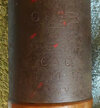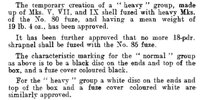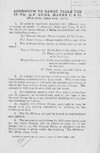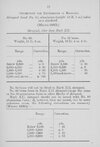I was told it was, makers name Colonial etc etc - I should have written it down 
If so, was Australia making fuzes by then or would it have been shopped plugged ?
It came as a composite round, 1908 RL casing and undated RMC No 80 fuze.
I'm not likely to find an Australian case here so will likely just leave it loose and plugged.
Any information welcome.
If so, was Australia making fuzes by then or would it have been shopped plugged ?
It came as a composite round, 1908 RL casing and undated RMC No 80 fuze.
I'm not likely to find an Australian case here so will likely just leave it loose and plugged.
Any information welcome.





